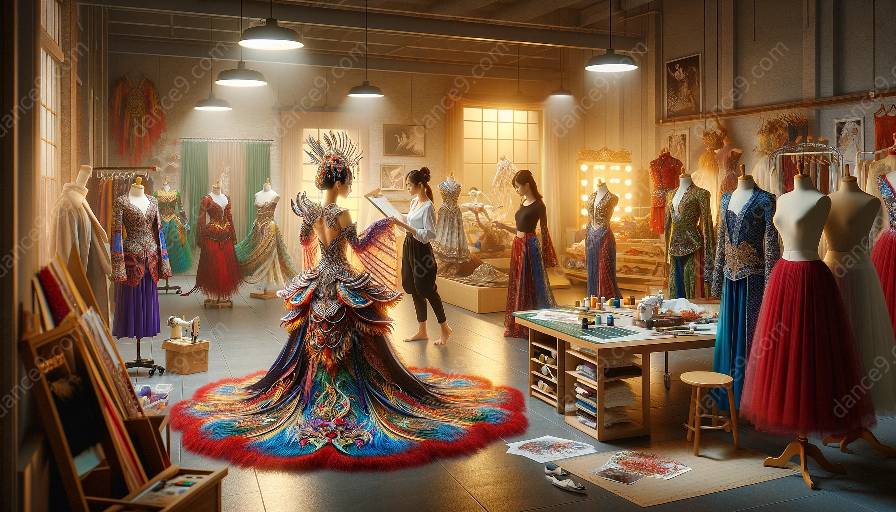Dance is an art form that beautifully blends movement, expression, and storytelling. When exploring the world of dance, it's important to recognize the significant role that costume design plays in the overall performance. Costume design is not merely about creating attractive attire for dancers, but it also involves ethical considerations that can greatly impact the dancers and their performances.
Costumes are more than just outfits; they are an expression of the dance and the cultural context in which it is performed. Hence, costume design for dance requires a delicate balance between aesthetics, functionality, and cultural sensitivity. What the dancer wears can hold deep cultural significance and the appropriate representation of cultural attire is essential to honor the traditions and heritage portrayed through the dance.
The Intersection of Dance and Costume Design
Costume design is an integral part of the storytelling in dance performances. It helps to convey the narrative, enhance the visual appeal, and bring the choreographic vision to life. The colors, fabrics, and design elements chosen for a costume can significantly impact the audience's perception of the dance.
When creating costumes for dance, designers must consider the movements and physical demands of the choreography. The attire should not hinder the dancer's ability to move freely and express themselves. Moreover, the costumes should be designed with durability and comfort in mind, ensuring that dancers can perform at their best without feeling restricted or uncomfortable.
Respecting Diverse Cultural Perspectives
One of the most important ethical considerations in costume design for dance is the representation of diverse cultural perspectives. Dance is deeply rooted in cultural traditions, and costumes often reflect the unique heritage and customs of a particular community or region. When designing costumes for culturally specific dances, it is crucial to approach the process with respect and understanding.
Designers should engage in thorough research and consultation with cultural experts to ensure that the costumes are authentic and respectful. By doing so, designers can avoid cultural appropriation and misrepresentation, and instead, celebrate the diversity and richness of various traditions through their designs.
Promoting Inclusivity and Body Positivity
Another ethical consideration in costume design for dance revolves around inclusivity and body positivity. Dance is an art form that celebrates movement in all its diverse forms, and the costumes should reflect this celebration of diversity. Designers should create costumes that are inclusive of different body types, ensuring that dancers of all shapes and sizes feel comfortable and confident in their attire.
Furthermore, costume design can play a significant role in promoting body positivity within the dance community. By designing costumes that flatter and accentuate the dancers' unique attributes, designers contribute to fostering a supportive and empowering environment for performers.
Sustainability and Ethical Sourcing
In an increasingly conscious world, sustainable and ethical practices have become paramount in the fashion and design industries, including costume design for dance. Designers are encouraged to consider the environmental impact of their costume creations, opting for eco-friendly materials and production methods whenever possible.
Additionally, ethical sourcing of materials is crucial to ensure that the production of costumes does not contribute to exploitative labor practices. Designers should prioritize working with suppliers who adhere to fair labor standards and uphold ethical production processes, thereby supporting the well-being of the individuals involved in creating the costumes.
Conclusion
Costume design for dance is a multifaceted process that goes beyond the mere aesthetic appeal of attire. It involves ethical considerations that encompass cultural sensitivity, inclusivity, sustainability, and respect for the art form. By integrating these ethical considerations into their design process, costume designers can uphold the integrity of dance performances and contribute to a more thoughtful and inclusive creative landscape.











































